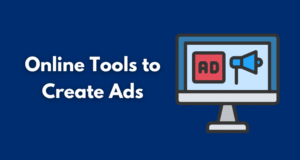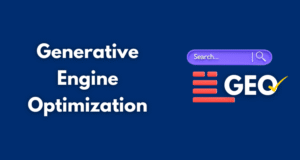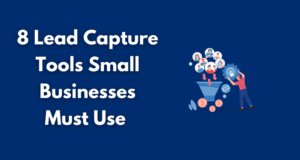A lot of businesses struggle to understand that in a digital era, the entire world is one market. If you’re providing digital services or creating digital products, a person living on the opposite end of the world is just as viable a customer as a person next door.
You no longer need to own a merchant ship in order to transport your goods on another continent, seeing as how you just have to take your phone and find a decent freight company to do it for you (and handle all the paperwork along the way).
Lastly, traveling is quick and efficient, but even when not traveling, you can use IM to communicate with partners and schedule conference calls in a matter of minutes.
This last part (networking) is especially important, and it starts with your marketing. Most of the time, when dealing with a potential partner or a client, you’re reaching out digitally, and their immediate reaction is to look you up. Now, even as a small enterprise, you have the potential to make your presence appear quite formidable.
With all of this in mind, here’s how you can build a scalable marketing strategy for global networking opportunities.

Table of Contents
ToggleCombine the digital and real world
You need a solid online profile – it’s your new business card. But here’s the thing: don’t make it read like a robot wrote it. Even when you’re presenting a highly professional image, your tone should still sound like you. That slight personal touch can make someone more likely to reply and stay in touch.
Conference calls are efficient, but let’s not kid ourselves – meeting in person hits differently. When you show up, it sends a message: “I care enough to get on a plane for this.” That alone can make someone treat your proposal more seriously or give you that second meeting without hesitation.
According to specialists behind TravelPerk, traveling doesn’t have to break the bank. Some tools help manage routes, loyalty points, and lodging in one place, and that’s a game-changer. Moreover, these tools often give you better rates than you’d get alone, especially if you travel often. Less stress, fewer tabs open, more time saved.
You know what makes digital conversations better? Reminding the person on the other end that you’re a real human. A quick voice message or video clip makes things more dynamic. Also, it helps with tone – there’s less room for misunderstanding when someone can hear your voice or see your facial expression.
Just because the meeting happens on Zoom doesn’t mean it has to feel distant. Keep the rhythm of a face-to-face meeting: open with some small talk, refer back to shared points from last time, and close with next steps. It feels more intentional that way, and people appreciate the structure.
Build a brand presence across multiple platforms
When people look you up, they’ll usually start with social media. So, you need to ensure your accounts feel part of the same story. Your Instagram shouldn’t look like it belongs to a completely different business than your LinkedIn. Also, keep the visuals and bios consistent – it builds trust faster.
When someone jumps from your site to your LinkedIn or finds you on Behance or Product Hunt, everything needs to feel connected. Same logo, same color palette, same tone. Even if people don’t consciously notice the consistency, they notice when it’s missing – and that makes your brand feel off.
Posting once every six months doesn’t cut it. People want to know you’re active. Also, make sure the way you write fits the tone of your audience. If you’re targeting young entrepreneurs in Brazil, for example, make it lively and culturally aware. No stiff, generic posts. Real people want real language.
Hashtags help new people find you, but only if you use the right ones. A random tag in your native language won’t help if you’re trying to connect with an audience halfway across the world. Moreover, tagging the right people or brands can open doors you didn’t even know existed.
Don’t post and disappear. When someone comments or reaches out, reply – even if it’s just a quick acknowledgment. That small interaction can turn into a client, a partner, or someone who refers others to you. It shows that there’s an actual person behind the brand, which always matters.
Target international keywords in your SEO
SEO isn’t one-size-fits-all. A keyword that works in the U.S. might be completely irrelevant in Germany or Japan. Regional research is essential. Look into what your target audience in each location searches for – and not just in English. Localization starts with knowing how people phrase their questions.
Auto-translate isn’t good enough if you’re serious about global reach. Sure, it’s convenient, but it misses context and tone. It can straight-up confuse readers. Hire someone who knows the language and the culture. You want the content to feel like it was written by a local, not translated by a bot.
If your site is built on something like WordPress, you’ve got plugins that make multi-language setup a breeze. Moreover, these tools help you organize versions of your site without messing up your layout or SEO. It’s a simple way to serve more people without needing a whole separate site for each region.
For more comprehensive localization, consider using a top software localization platform to streamline the process across multiple languages and regions. Similarly, if you’re in the tourism space, using a dedicated booking software for adventure businesses can help you reach international travelers by integrating with global OTAs and managing cross-border bookings efficiently.
A strong backlink from a .de or .co.uk domain gives your site more credibility in those regions. It’s not just about SEO – it tells search engines that you matter outside your own country. Also, it helps real people find you through trusted local sites, which often carry more weight than global ones.
You don’t have to reinvent the wheel constantly. Content about solving universal problems (like productivity, pricing, or collaboration) works just about everywhere. Moreover, evergreen content is easier to repurpose and translate. When you create something useful once, you can keep adapting and sharing it in new regions for years to come.
Partner with influencers and affiliates in different countries
You don’t need someone with a million followers. A micro-influencer with 5,000 engaged fans in your target market might be way more valuable. Moreover, they tend to be more affordable and more likely to say yes. Look for people whose followers care about what they recommend – it makes all the difference.
Make life easy for them. They’ll probably move on if they have to dig through your site or edit graphics just to post about you. Give them clean, ready-to-use visuals and text. Make sure the messaging is clear so they can just plug it into their usual posting flow.
Sometimes a shoutout is nice, but money talks. Set up an affiliate system so influencers can earn a cut every time someone buys through their link. It’s a win-win: they’re more motivated to promote you, and you’re only paying for actual results. It also makes the relationship feel more professional.
Let them translate your message in a way that fits their audience. If it sounds awkward or overly formal, you don’t want someone from Spain posting a direct copy of your U.S. tagline. Trust them to know their people. Also, this gives your message more authenticity – it feels natural, not forced.
Not every partnership will hit the mark, and that’s okay. Just make sure you’re tracking clicks, conversions, and general engagement. Moreover, use that data to see what works in which region. You’ll start spotting patterns and refining your approach until it’s dialed in for every country you’re targeting.
Use digital events to boost awareness
Digital events give you access to people you’d never meet in person, at least not easily. Hosting a webinar or joining one lets you showcase your expertise in a global setting—for example, by using platforms like Lyyti to organize and promote your event effectively. It creates an excuse for follow-up messages later. You’re no longer cold emailing – you’re continuing the conversation.
Everyone loves a good handout, especially when it’s useful. Offering a guide, checklist, or even a simple PDF takeaway makes your presentation feel more valuable. It gives attendees something they can share or come back to later. That kind of follow-up material keeps your name in their inbox.
Don’t just host the event and call it a day. Make sure you’re collecting emails – ethically and with consent, of course. Also, a segment that lists by country or job role. A broad list is nice, but a segmented one is where the real magic happens. That’s how you personalize future outreach.
Promotion matters as much as the event itself. Use a platform like LinkedIn Events and Eventbrite to spread the word. They already have international audiences built in, which helps you reach beyond your usual circles. They provide credibility – people are more likely to RSVP if they find you through a platform they trust.
Don’t underestimate a good thank-you. Sending a quick message – mentioning a specific question they asked or a comment they made – can turn a one-time attendee into a connection. Moreover, it shows that you paid attention and value their time, which makes them more likely to remember you.
Digital marketing is a foundation for effective networking
We’re not talking about one-offs. What we’re talking about are reliable, meaningful relationships that span continents. Also, these connections don’t come from luck.
They come from showing up consistently, tweaking your message for different audiences, and making sure people feel seen. If someone looks you up and instantly knows who you are, what you do, and why they should care – that’s when you’ve got something.









